An innovative approach to adapting an historic city neighbourhood park. LIFE CRITICAL is looking to measure the local climate and understand how Horton Park can contribute to mitigating climate change through changes to the parks landscape, but shaped by its history.
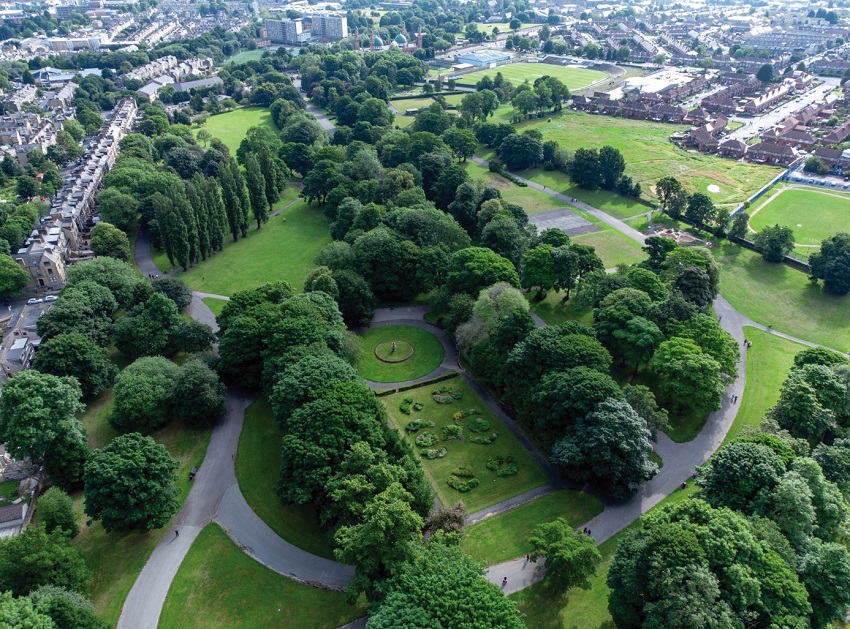
Our aims
- Repairs to the pond and bridge
- Re-naturalisation
- Climate change adaptations in a sensitive way (Listed park)
- Interpretation of history
- Community engagement
- Educational links
Expected achievements
- A wider range of people will be involved in heritage
- Park users will be made more aware of the history of the park
- Heritage will be in better condition
- Repairs to the bridge
- Heritage will be identified and better explained
- Educational resources
- People will have greater wellbeing
- The local area will be a better place to live, work or visit
- The local economy will be boosted.
Historic development of Horton Park
Horton Park is a public park in Bradford, England, located to the west of the city in Great Horton. It was opened on 25 May 1878 on land purchased by Bradford Council in 1873.
The park was designed by William Gay, landscape gardener and surveyor. William was approached by the Bradford Cemetery Company to become Bradford Cemetery’s first registrar. William moved from Leicester to Bradford to design and lay out Undercliffe Cemetery over the years 1852 to 1854.
William also designed and laid out Roberts Park in Saltaire, now a World Heritage Site, for Sir Titus Salt which opened in 1871.
Horton Park had areas for specific sporting activities including bowling greens, tennis courts, a putting green, together with a children’s play area, which were added during the first half of the 20th century.
The 1893 Ordnance Survey map shows the park adjoining a cricket ground and a football ground along the northern half of the east boundary. By 1908 the park boundary had been moved to the west to allow Powell Avenue to be constructed. From 1908 to 1932 Horton Park Avenue was served by a tramway.
Grade II listed in 2001 the park remains in use as a public park in the ownership of the City of Bradford Metropolitan District Council.
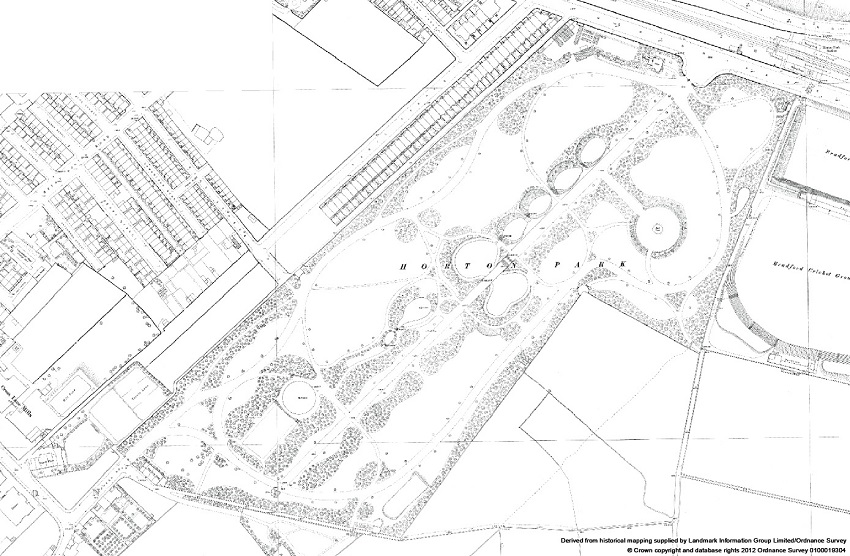

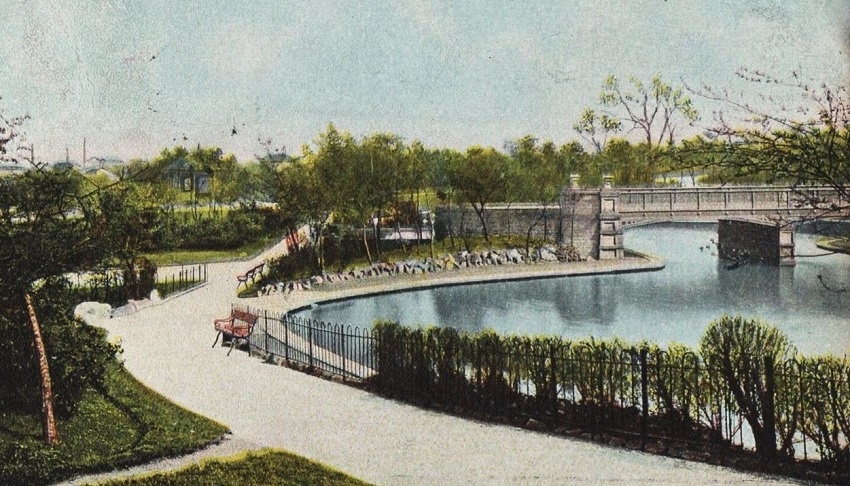
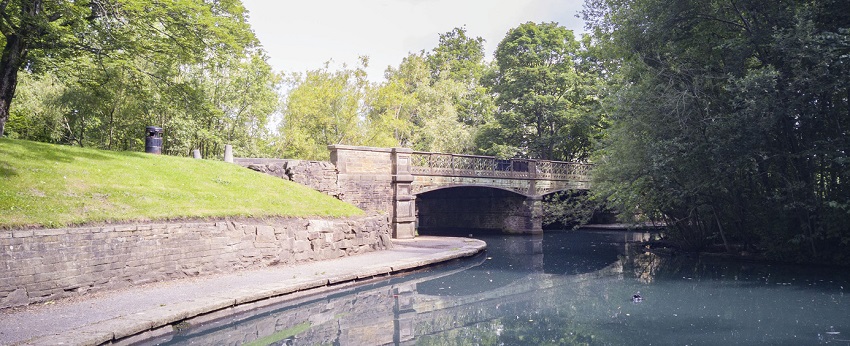
Latest updates
Environmental and health benefits
In order to demonstrate climate impacts and any improvements that are achieved, baseline conditions have been established using Meteorological Office archive observations, rainfall measurements and modelling data used to define Bradford’s Clean Air Zone.
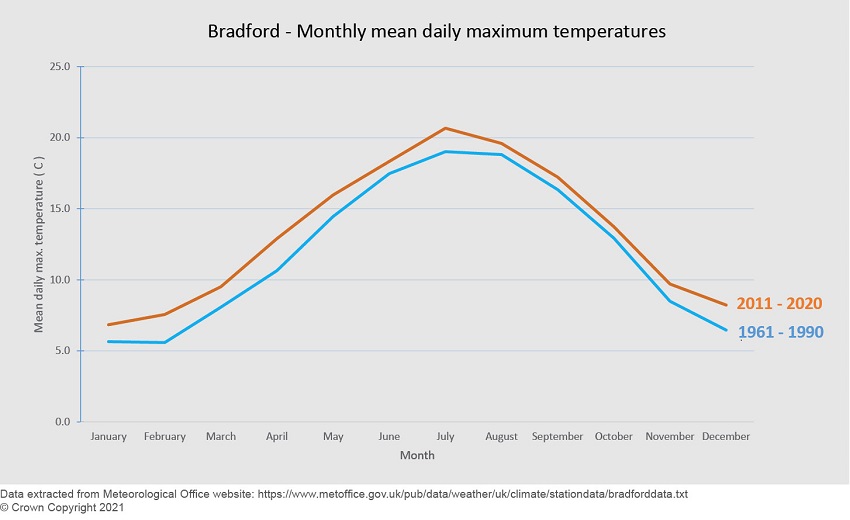
The diagram above is an analysis of UK Meteorological Office archive data suggesting an increase in daily maximum temperatures over 30 years.
Through collaboration with the University of Bradford and the Interreg SCORE and LIFECritical projects, 11 low cost air quality monitors have been installed across the Horton Park neighbourhood. These Internet of Things (IoT) devices are mounted on Bradford Council’s smart street lighting infrastructure and provide real time measurements via a LoRaWAN network. Data from the sensors is openly available via Bradford Urban Observatory.
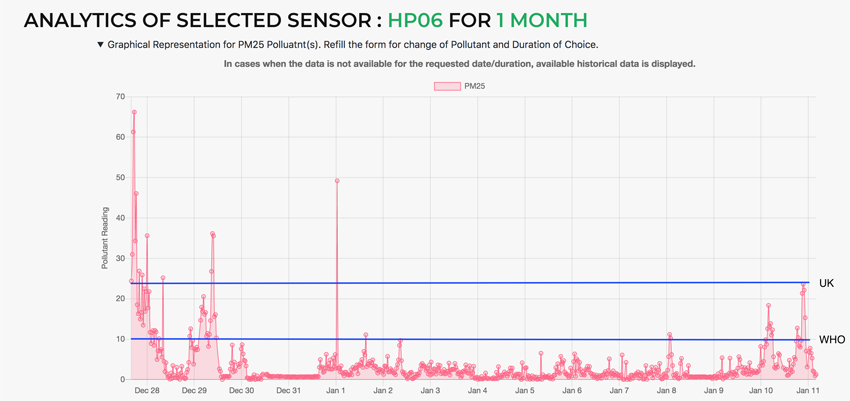
The diagram above shows a visualisation of a one month time series plot of PM2.5: One of the sensors around Horton park showing a number of peaks going beyond UK and WHO PM2.5 annual limits. This sensor is located near a busy road junction on the Great Horton road.
To monitor surface water runoff flood risk, an ‘industry standard’ tipping bucket rain gauge has been deployed close to Horton Park with observations available on the Council’s open data platform and a comprehensive drainage investigation is ongoing.
Horton Park natural play areas
Works to Horton Park natural play area for 0 to 3 year olds is now complete and softworks such as trees and shrub planting is starting to establish. The Horton Park primary school field is also complete. The swales are working well to collect excess water in times of heavy rainfall to slow the flow and the trees are settling in well. The sites are well used by the school and parents on the way to and from school drop off. The site has been heavily used during covid enabling families to spend time together safely outdoors.
Better Place holds regular family engagement sessions in the natural play area. it even featured on the BBC Countryfile programme in November 2021. The Better Place Urban Ranger visits the sites regularly to carry out small maintenance tasks and can report into the Council’s maintenance teams or ward officers if support is needed for anything larger. Bradford Council have taken over the main maintenance regime.
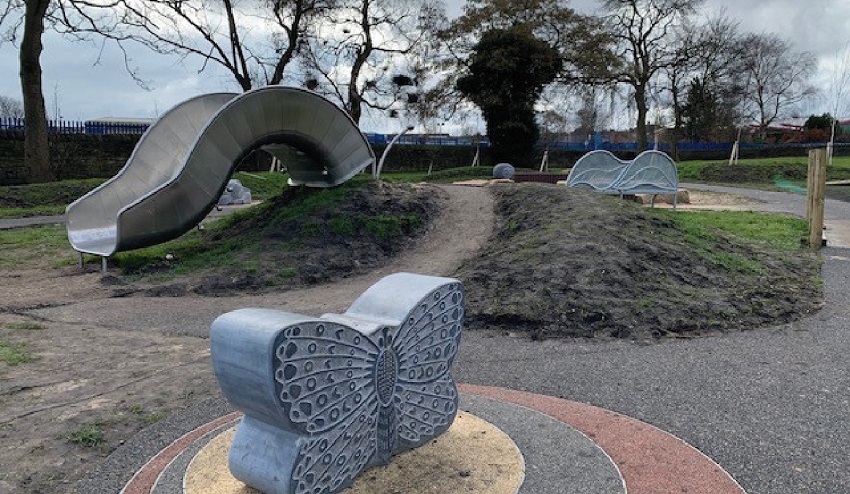
Our bespoke caterpillar slide is installed along with the sand pit. Hopping stones have been inserted into the path and look out posts and the animal play sculptures are finished. An image below shows Dan working on the peeping posts on which we added words ‘to look’ in different languages.
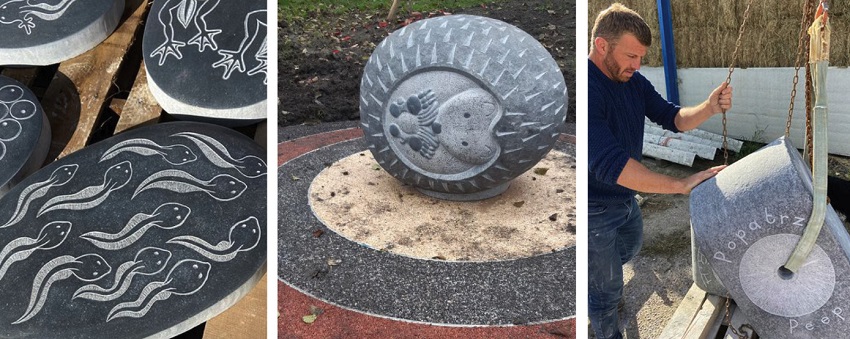
Horton Primary Field
The gateway and side panels depicting the biodiversity of the site and the lifecycles of a dragonfly and butterfly are now installed. Robust and beautiful, they will make a treasurable addition to both of the Horton sites.
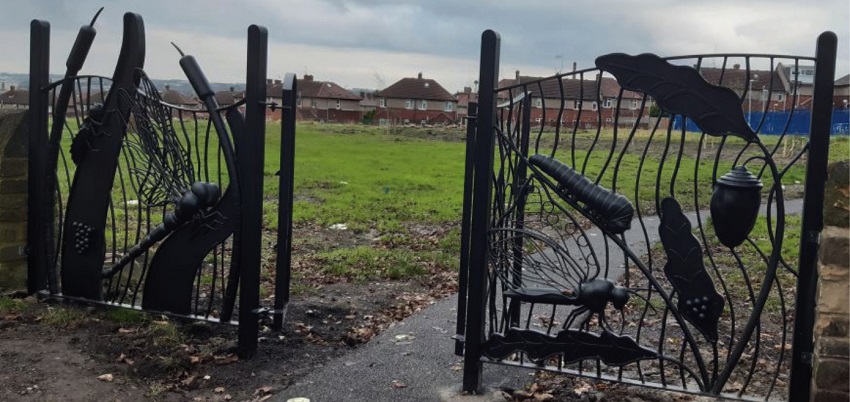
Interested to learn more about Horton Park? Visit Bradford Council’s page on LIFE CRITICAL.
